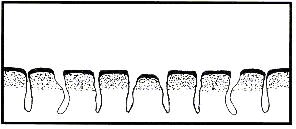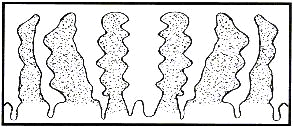THE DISEASE
History
Celiac Disease
Dermatitis Herpetiformis
Treatment and Consequences
Doctors in Brazil
Statiscians Data
News
Free Aid
REGISTER
Celiacs
Doctors
Companies
ACELBRA
How appeared ACELBRA
Our estatuto
Acelbra X Government
Associations in Brazil
Associations in the world
Our events and meetings
Brazilians Laws to Celiacs
Newsletter
Pictures
FOOD
Allowed and Forbiden
Gluten Free Stores
Recipes without gluten
Books
COLLABORATE
Be a voluntier
Collaborate with ACELBRA
INTRANET
Email
Documents
OTHERS LANGUAGES
Português
Español
|
The Celiac Disease Today
It is the PERMANENT INTOLERANCE TO GLUTEN and still Little known, its symptoms can be confused with others diseases. The Celiac Disease generally to appear in infancy, between first and the third year of life, being able however, to appear in any age, also in the adult. The treatment of the disease consists of a total exempt diet of gluten. The carriers os the disease can't ingest foods as : breads, cakes, big cookies, pasta, coxinhas, quibes, pizzas, beers, whisky, vodka because these foods to possess gluten in its composition or process of manufacture. Had the exclusion of some rich foods in carbohydrates and fibres, the diet of Celiac habitually is composed in its bigger part of fats ( butters, oils, etc ) and proteins ( generally meat ) and in lesser part of carbohydrates ( pastas without gluten, sugars, etc ). All Celiac that does not transgress the diet, has an increase of the corporal weight, and this form must has a balanced diet. For that must diminish the protein ingestion, moderate the comsumption of fats and increase the comsumption of fruits, juices, vegetables, becoming its more adequate and healthful feeding.
What is GLUTEN ?
It is the main protein in Wheat, Oats, Rye, Barley, and in the Malte ( by-product of the barley ), cereals used in the food composition, medicines, industrialized drinks, as well as cosmetics and others products. In the truth, harmful and the toxic one to the intestine of the intolerante patient to gluten they are "parts of gluten", that they receive different names for each cereal. See below: In the Wheat is Gliadina, in the Barley is Hordeina, in Oats is Avenina, and in the Rye is Secalina. The Malte, much questioned, are a product of the fermentation of the barley, therefore it presents a fraction of gluten. The products that contain malte, boiled must of malte or extract of malte don't have to be comsumed by Celiacs. The gluten don't disappear when the foods are baked or stews, and by this a diet must be followed to the scratch. The Gluten attacks and damages the small intestine, and harms the absorption of foods.
See the small intestine damaged...

...and compare with the small intestine normal.

Which the symptoms most common ?
The clinical picture of the manifest disease with and without symptoms. In the first case, it has two forms:
The Classic
It is more frequent in the children, appearing between first and the third year of life, when introducing feeding that the base is soup of bread, soup of macarroni and big cookies, among others industrialized food with forbidden cereals. It is characterized for the chronic diarrheia, malnutrition with deficit of the growth, anemia not curable, low weight and lack of appetite, swelled belly, vomits, abdominal pain, osteoporose , sterility, atrophied abortions of repetition, fine legs and fine arms, apathy, acute malnutrition that can take the patient to the death if his disease don't has treatment.
The don't Classic
It presents monossintomaticas manifestations, and the intestinal charges don't call the attention of all relatives. It can be for example, resistent anemia, irritability, fatigue, low profity of weight and stature, arrest of womb, chronic intestinal constipation, spots and alteration of the dental enamel, sterility and osteoporose before the menopause.
And If the celiac not have symptoms ?
It still has, the disease in the assimptomatic form. They are carried through in these cases, examinations ( sorology marking ) in direct relatives of the celiac, that has more possibilities to present the disease ( 10% ). If don't treated the illness, it can have complications as the cancer of the intestine, anemia, osteoporose, abortions of repetition and sterility.
|